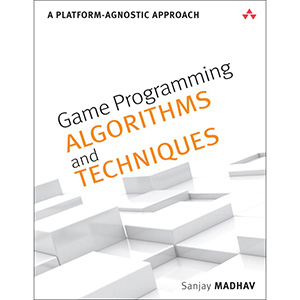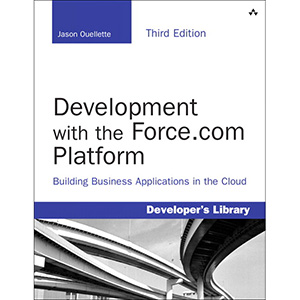Wow! eBook: Quality Code - 3 new eBooks |  |
- Quality Code
- Game Programming Algorithms and Techniques
- Development with the Force.com Platform, 3rd Edition
| Posted: 25 Dec 2013 02:01 AM PST
Book DescriptionTest-driven, test-first, and test-early development practices are helping thousands of software development organizations improve their software. Now, in Quality Code: Software Testing Principles, Practices, and Patterns, Stephen Vance builds on all that's been learned about test-driven development, helping you achieve unprecedented levels of first-time quality. Using real-world code examples, this guide introduces patterns, principles, and more than two dozen detailed techniques for testing any software system more fully, effectively, and painlessly. Vance presents a conceptual framework to help you focus your efforts and design recommendations for improving testability across the software lifecycle, and also provides hands-on guidance to simplify testing of the full spectrum of code constructs. You'll learn how to choose the best testing techniques for every situation, from the most common scenarios to threading. Two complete case studies put it all together, walking you through testing a brand-new Java application and an untested "legacy" JavaScript jQuery plugin. Whether you're developing cutting-edge code for a new start-up, or maintaining an unruly old system, this guide will help you deliver exactly what you need: quality code.
Table of Contents Part II: Testing and Testability Patterns Part III: Worked Examples Book Details
Related Books
The post Quality Code appeared first on Wow! eBook. |
| Game Programming Algorithms and Techniques Posted: 25 Dec 2013 01:57 AM PST
Book DescriptionGame Programming Algorithms and Techniques is a detailed overview of many of the important algorithms and techniques used in video game programming today. Designed for programmers who are familiar with object-oriented programming and basic data structures, this book focuses on practical concepts that see actual use in the game industry. Sanjay Madhav takes a unique platform- and framework-agnostic approach that will help develop virtually any game, in any genre, with any language or framework. He presents the fundamental techniques for working with 2D and 3D graphics, physics, artificial intelligence, cameras, and much more. Each concept is illuminated with pseudocode that will be intuitive to any C#, Java, or C++ programmer, and has been refined and proven in Madhav's game programming courses at the University of Southern California. Review questions after each chapter help solidify the most important concepts before moving on. Madhav concludes with a detailed analysis of two complete games: a 2D iOS side-scroller (written in Objective-Cusing cocos2d) and a 3D PC/Mac/Linux tower defense game (written in C# using XNA/ MonoGame). These games illustrate many of the algorithms and techniques covered in the earlier chapters, and the full source code is available at gamealgorithms.net. Coverage includes:
Table of Contents Appendix A. Answers to Review Questions Book Details
Related Books
The post Game Programming Algorithms and Techniques appeared first on Wow! eBook. |
| Development with the Force.com Platform, 3rd Edition Posted: 25 Dec 2013 01:52 AM PST
Book DescriptionMaster Force.com, Today's Fastest, Most Flexible Cloud Development Platform With Salesforce.com's Force.com platform, you can build and deploy powerful cloud-based enterprise applications faster than ever before. Now, Jason Ouellette gives you all the practical, technical guidance you need to make the most of the newest Force.com releases in your own custom cloud applications. Throughout, he adds new code and updated best practices for rapidly prototyping, building, and testing production-quality Force.com solutions. This edition's extensive new coverage includes Developer Console, JSON, Streaming and Tooling APIs, Bulk API, Force.com Canvas, REST integration, support for Web MVC frameworks, Dynamic Apex and Visualforce, and an all-new chapter on mobile user interfaces. Ouellette covers the entire platform: UIs, database design, analytics, security, and many other topics. His code examples emphasize maintainability, flexibility, and seamless integration—and you can run and adapt all of them with a free Force.com Developer Edition account. Coverage includes:
If you're already building Web or mobile applications, take your next giant step into enterprise cloud development—with Development with the Force.com Platform, Third Edition. All code examples in this book are available on Github at http://goo.gl/fjRqMX, and as a Force.com IDE project on Github at https://github.com/jmouel/dev-with-force-3e. Table of Contents Book Details
Related Books
The post Development with the Force.com Platform, 3rd Edition appeared first on Wow! eBook. |
| You are subscribed to email updates from Wow! eBook To stop receiving these emails, you may unsubscribe now. | Email delivery powered by Google |
| Google Inc., 20 West Kinzie, Chicago IL USA 60610 | |



Tidak ada komentar:
Posting Komentar